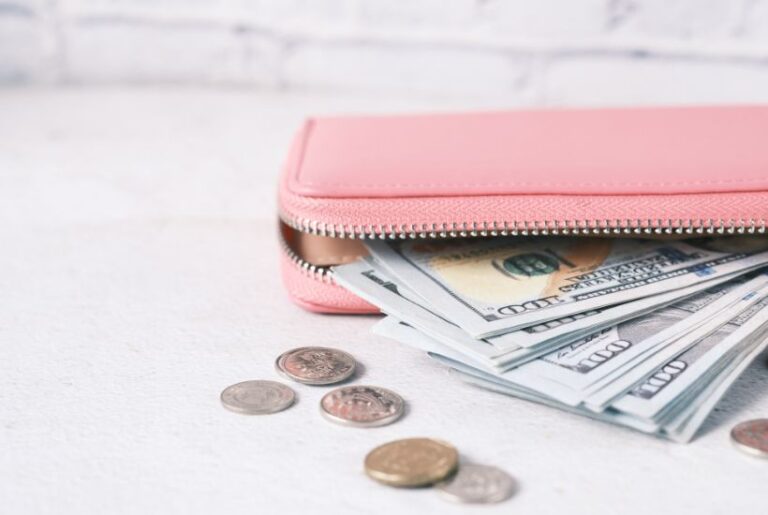How to Break Free From the Paycheck to Paycheck Cycle and Start Saving for Your Future
Living paycheck to paycheck is a tough cycle to break. It feels like no matter how hard you try, you’re always just one unexpected expense away from a financial disaster. If you find yourself looking at your bank account, barely scraping by, and wondering how to start saving for the future, know that you’re not alone. Many of us have been there, and the good news is that with some small changes, you can begin to shift your finances in a more positive direction.
It’s all about creating a plan, making small, manageable changes, and giving yourself the grace to take things one step at a time. In this post, I’ll walk you through how to stop the cycle of living paycheck to paycheck and start building the financial future you deserve. It might feel overwhelming at first, but with a little guidance and persistence, you’ll get there.
Recognize and Acknowledge Your Situation
The first step in breaking the cycle is acknowledging that you’re in it. It’s easy to ignore the reality of your financial situation, but doing so will only keep you stuck. Take a deep breath, and then get real with yourself. You don’t need to be ashamed—most people are living paycheck to paycheck at some point in their lives.
Start by getting a clear picture of where you stand financially. Look at your income, your spending habits, and any debts you might have. Write everything down in a notebook or use a budgeting app to track it. Seeing everything on paper (or on screen) helps you understand what’s going on and gives you the information you need to make changes.
Create a Budget You Can Stick With
Once you understand your current financial situation, it’s time to create a budget. But not just any budget—one that’s realistic and achievable. Budgeting doesn’t have to be a complicated math equation. Keep it simple, but be honest with your expenses. It may seem scary at first but consistency is key!
Here are the basics of creating a new budget:
- Start with your income: What are you bringing in each month? Don’t forget to account for all sources of income—your salary, side gigs, or any other way you make money.
- List your expenses: Write down all your regular expenses—mortgage or rent, utilities, groceries, transportation, insurance, etc. Be honest about what you’re spending. You might be surprised at how small expenses add up.
- Save for savings and debt: It’s crucial to prioritize saving—even if it’s just a little bit each month. The same goes for debt. Make a plan to pay off your debts, starting with the high-interest ones first.
Once you’ve got this written down, compare it to your actual income. Are your expenses more than your income? If so, it’s time to look at where you can cut back.
Cut Back On Unnecessary Spending
Let’s be real: we all have areas where we can cut back on spending. You don’t have to eliminate every little luxury, but being mindful of where your money is going can add up to a huge difference in your financial situation.
- Dining out and takeout: Eating out is convenient but can quickly drain your budget. Try cooking at home more often. Meal planning is a great way to save money while still eating delicious, healthy meals.
- Subscriptions: Are you paying for subscriptions you don’t really use? Streaming services, gym memberships, magazine subscriptions—these can add up quickly. Take a look at your subscriptions and cut the ones that no longer serve you.
- Impulse buys: If you find yourself buying things you don’t need (hello, Target runs!), consider putting a hold on those kinds of purchases. Try setting a waiting period for any non-essential item to see if you still want it after a few days.
- Coffee and snacks: Yes, that daily coffee run might be costing you more than you realize. Brewing your coffee at home is a small but impactful change to make.
Small sacrifices can lead to big results. Every penny you save is one that can go toward building an emergency fund or paying off debt.
Look for Ways to Increase Your Income
If you’re still finding it difficult to make ends meet, after cutting out unnecessary spending, it might be time to explore ways to increase your income. There are many ways to make extra money on the side, whether it’s through freelancing, a part-time job, or selling items you no longer need.
- Freelancing or side gigs: Do you have a skill that you can offer to others? Whether it’s writing, graphic design, tutoring, or pet sitting, side gigs can bring in extra cash.
- Sell unused items: Take a look around your house—are there things you don’t use anymore? Selling unused clothes, electronics, or furniture can give you a quick cash boost.
- Remote work opportunities: With the rise of remote work, there are more opportunities than ever to find flexible, part-time work from home.
- Take on a extra part time job or overtime hours: It may not be desirable but working more hours in your current job or working in the evenings or weekends may help provide needed additional income.
Even small extra sources of income can help you pay down debt faster, build your savings, and stop living paycheck to paycheck. Remember, all of this hard work is temporary while you create margin in your monthly finances, and it will pay off in the long run.
Pay Down Your Debt
Now, before you roll your eyes and say, “this lady is crazy, I don’t have extra money”, hear me out. Debt is one of the biggest obstacles standing in the way of your financial freedom. Whether it’s credit card debt, student loans, or medical bills, debt can feel like an overwhelming burden. But the good news is that there are ways to pay it off, even if it feels impossible.
Start by making a list of all your debts, including the amounts and interest rates. From there, you can choose a repayment strategy. The two most common methods are:
- The Debt Snowball: Focus on paying off your smallest debt first while making minimum payments on the others. Once the smallest debt is paid off, move on to the next one. This method can help you gain momentum and build confidence.
- The Debt Avalanche: Focus on paying off the debt with the highest interest rate first. This method saves you more money in the long run because you’re tackling the most expensive debt first.
Pick the method that feels best for you and stick with it. I recommend using the debt snowball method for quick wins and momentum each time a debt is paid off. Whichever method you choose just remember that every payment brings you closer to financial freedom. But, you have to have a firm decision from the get go to not continue to use debt as an option.
Build an Emergency Fund
One of the best ways to break the paycheck-to-paycheck cycle is by building an emergency fund. Having a buffer for unexpected expenses—like car repairs or a medical bill—means you won’t have to rely on credit cards or loans when life throws you a curveball.
Start small. Set a goal to save $500 or $1,000 in a separate savings account. This will give you a cushion to fall back on when things don’t go according to plan. Once you’ve reached your goal, keep building. A good rule of thumb is to aim for 3-6 months of living expenses saved up.
Make a Plan for Your Future
Once you’ve gotten your finances under control, it’s time to start planning for the future. Retirement, big life events, and even vacations require long-term planning.
Consider opening an IRA or contributing to a 401(k) if your employer offers one. If you have kids, start thinking about education savings and any big milestones ahead. Planning ahead will help ensure that you’re not just getting by but thriving.
Stay Consistent and Have Patience
Breaking the paycheck-to-paycheck cycle won’t happen overnight, and it’s important to be patient with yourself. Keep working on your budget, cutting back where you can, building your savings, and paying off debt. Over time, you’ll start to see the results of your hard work.
Celebrate your progress—no matter how small—and stay focused on the long-term goal of financial freedom. You’ve got this!
Living paycheck to paycheck can feel like a never-ending struggle, but it doesn’t have to be your reality. With a clear plan, intentional changes, and some patience, you can break free from this cycle and begin building a brighter financial future. Start small, stay consistent, and give yourself grace along the way. You’re not alone, and with a little effort, you’ll soon be on the path to financial freedom!



